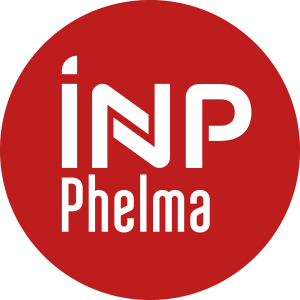Number of hours
- Lectures 6.0
- Projects 0
- Tutorials 6.0
- Internship 0
- Laboratory works 6.0
ECTS
ECTS 2.0
Goal(s)
This course is intended to provide the necessary foundations for understanding, analyzing and designing neuromimetic networks (artificial neural networks or formal neural networks). It will provide an understanding of the origin of artificial neural networks, from Perceptron, to Multi-Layer Perceptron, to Deep Learning, to unsupervised networks and the NeoCognitron. The course will address the details of the information processing in a Deep Convolutional Neural Network (transduction, notion of receptive fields and convolution, notion of pooling and similarities with the human visual system, activation functions, error computation and gradient descent, iterative learning, etc.). Finally, the course will address the advantages, limitations and perspectives of artificial neural networks and general research in the field of AI. This course is intended for students from a variety of disciplines and is designed in such a way that it is accessible to understanding by students from different disciplinary backgrounds.
The tutorials will allow you to become familiar with the Python language and to discover the Scikit-Learn and PyTorch libraries. The three 2-hour sessions will focus on - S1: Introductions of concepts / Installation / first steps - S2: XOR & Perceptron / MLP - S3: CNN networks
Content(s)
- Introduction
- Formal neurons
- Activation functions
- Notion of distributed parallel processes
- Symbolic AI versus neuromimetic AI
- Gradient descent
- Convolution/pooling as a model of the human primary visual system
- Advantages of a distributed parallel system
- Limitations and perspectives of artificial neural networks.
Prerequisites
This course is intended for students from a variety of disciplines and is designed in such a way that it is accessible to understanding by students from different disciplinary backgrounds.
SESSION 1 on site
Examination modalities: continuous assessment (CC, BE report) and written exam
Authorized documents: No documents
Calculation of the grade: 30% CC + 70% exam
SESSION 2 on site
Examination modalities: continuous assessment (CC, BE report from session 1) and written exam
Authorized documents: No documents
Calculation of the grade: 30% CC (session 1) + 70% exam
SESSION 1 remote
Examination modalities: continuous assessment (CC, BE report) and written exam
Authorized documents: No documents
Calculation of the grade: 30% CC + 70% exam
SESSION 2 remote
Examination modalities: continuous assessment (CC, BE report from session 1) and written exam
Authorized documents: No documents
Calculation of the grade: 30% CC (session 1) + 70% exam
Translated with www.DeepL.com/Translator (free version)
Session 1 présentiel : 30%CC + 70% exam
Session 2 présentiel : 30% CC (session 1) + 70% exam
Session 1 à distance : 30%CC + 70% exam
Session 2 à distance : 30% CC (session 1) + 70% exam



